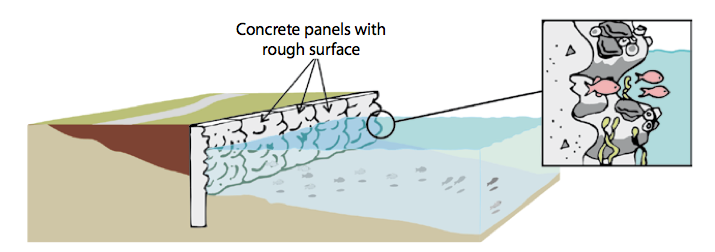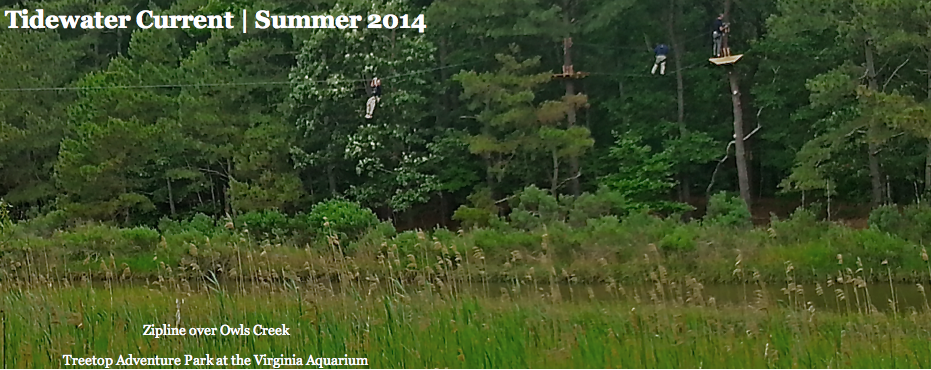
Transmitting news and infomation about sustainable endeavors in Coastal Virginia and beyond. Updated Weekly.
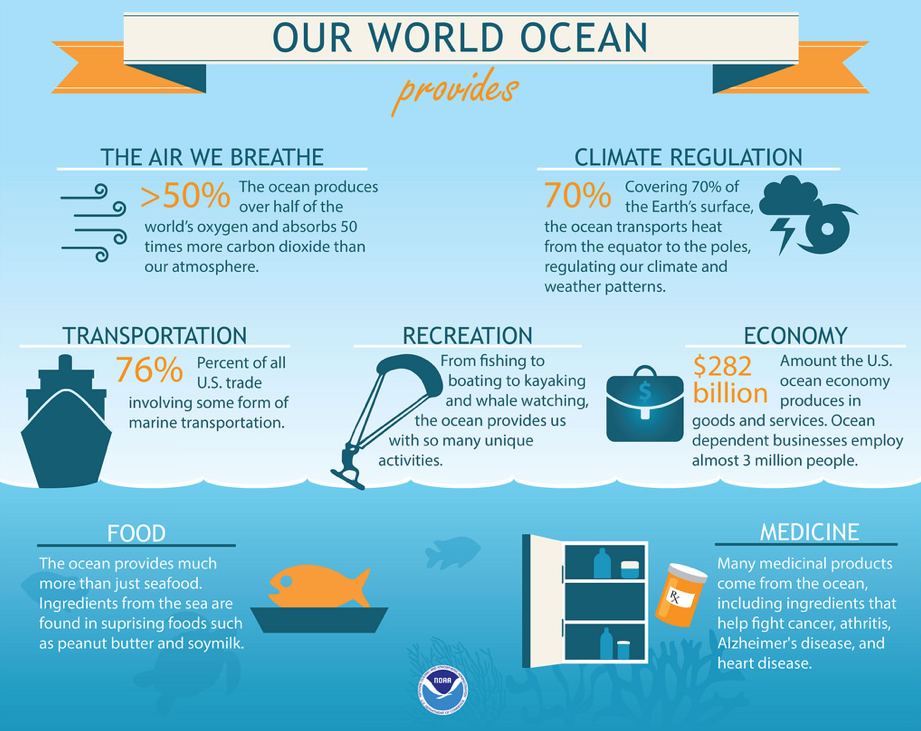 Nature at Work
Nature at Work
Part 2 - Marine Ecosystems
Posted 27 July 2014 - by Carol Brighton
Marine processes heavily influence the human environment. From the air we breathe, to the water we drink, to the food on our tables, we have the ocean to thank. Oceanic systems also regulate climate, sequestering carbon while also transferring and storing heat. And even though the sea can wreak havoc along populated coasts, it also supports ecosystems that help protect our shorelines.
With many environmental services compromised as a result of human activity, the business of conservation and restoration is a rapidly growing industry. Considering the myriad of benefits, it turns out that reestablishing ecosystem services also makes financial sense. Economists have determined that on average for every $1 million invested in regenerating coastal habitats, 17 jobs are created. The benefit to cost ratio can also be very favorable. For example, restoration of the Virginia coastal (seaside) bays cost $2.5 million in economic output and has an expected return of $34-84 million in benefits.
Covering close to three-quarters of the planet, the oceans play a significant role in global services valued at $142 trillion annually. With heightened climate concerns, understanding the role of biogeochemical cycles and shoreline defense supported by marine ecosystem is fueling research and regenerative programs. According to Ariana Sutton-Grier of the National Oceanic and Atmospheric Administration (NOAA), coastal habitats, mainly mangroves, salt marshes and sea grasses are "sequestering carbon at rates ten times higher than most forested systems." Although small in geographic extent, they "represent an equivalent carbon sink to our forested systems." These same systems also mitigate storm damage. Given the devastation caused by hurricanes Katrina and Sandy, nature is being incorporated into hazard mitigation and resilience schemes. The following sections showcase some potentially surprising ecological services as well as innovative initiatives and nature based design solutions for shoreline protection.
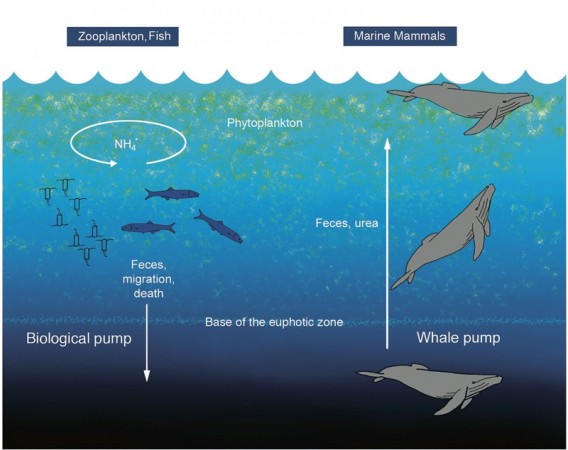 Whale Pump - Nutrient Cycling- Image: Peter Roopnarine, Joe Roman, and James J. McCarthy Whale Pump - Nutrient Cycling- Image: Peter Roopnarine, Joe Roman, and James J. McCarthy |
Great Whales are Ecosystem Engineers
In addition to saving great whales from extinction, a 1983 international ban on whaling is likely having positive climate benefits resulting from rebounding populations. Recently, more interesting news surfaced from Joe Roman and colleagues regarding the role great whales play in cycling nutrients and regulating climate.
Once prolific, whales played a significant role in ocean ecosystems. But "for a long time, whales have been considered too rare to make much of a difference in the oceans," says Roman of the University of Vermont. In a paper published in Frontiers in Ecology and the Environment, the authors state, "the decline in great whale numbers, estimated to be at least 66% and perhaps as high as 90%, has likely altered the structure and function of the oceans, but recovery is possible and in many cases is already underway." Fertilizing the open ocean, whales not only support the basis of the food chain and therefore commercial fisheries, they transport nutrients from the ocean depths to the surface and long distances as they migrate to and from feeding and nursery grounds. According to Roman " whales dive deep to feed, they release the nutrients at the surface, and this really matters in the summer, when the growth of algae are restricted because there aren't enough nutrients in the sea. So the whales can actually be increasing productivity in the areas in which they're feeding." Upon death, most whales fall to the seafloor supplying needed nutrients to the communities that survive there. Through this process they "also sequester carbon, so this may be a way of mitigating climate change, if we can restore whale populations throughout the world," says Roman.
Oysters Rock
Small in size, but not in worth, oysters like whales provide critical ecological services and have also suffered from overharvesting. In the last 100 years global stocks have declined by 85% and the situation in the Chesapeake Bay, historically renown for its teeming oyster reefs, is worse. Through ambitious programs that involved academia, non-profits and government agencies, oyster populations once on the verge of collapse are beginning to make a comeback in the Bay. The oyster industry is being revived and jobs both in aquaculture and restoration are being created.
Aquacultured Oyster Market in Virginia |
Revered by connoisseurs from near and far, the commercial oyster industry is once again big business in the region. Sales of aquacultured product are growing while restoration projects throughout the watershed are being conducted. Federal and state sponsored initiatives are are also being augmented by non profits, like the Nature Conservancy, Chesapeake Bay Foundation, Elizabeth River Project and Lynnhaven River Now (LRN). In addition to recovered and fossil shell, artificial substrate like reef balls and castles, are being deployed. Reefs not only provide habitat, they also filter pollutants including nutrient runoff from farms which spawn algae blooms and create dead zones. Researchers at the Virginia Institute of Marine Sciences have found that the rate of nitrogen uptake is significant. According to a joint study by NOAA and the USGS, "all of the nitrogen currently polluting the Potomac River estuary could be removed if 40 percent of its river bed were used for shellfish cultivation." Considering the qualitative benefits offered by reefs, its very possible that future restoration and aquaculture operations could earn income or even be financed through trade in nutrient markets.
|
Oysters Grow Vertically and Stabilize Shorelines
Oyster reefs also safeguard shorelines by slowing and capturing sediment and absorbing wave energy. A study coauthored by the University of North Carolina's Antonio Rodriguez reports that reefs on the North Carolina intertidal zones can grow fast enough to outpace sea level rise. He reports that in the right conditions they "have the potential to grow 11 cm/yr." While ocean acidity associated with rising CO2 is a concern, oysters have a form of protection contained in their shells. Calcium carbonate released as shell begins to dissolve, neutralize the acid, working like a TUMS antacid.
Pictured on the left is an oyster castle project constructed by the US Army Corps of Engineers on the Isle of Palms in South Carolina in May 2012. The reef grew 14 mm. in height over the course of the year while sediment elevation behind the castles increased by 3.5 inches. Manufactured by Allied Concrete, a Charlottesville based company, the interlocking blocks are made from shell, limestone and concrete. This eco friendly material developed in conjunction with the Nature Conservancy has been certified "cradle to cradle."
Oyster aquaculture is not just taking off commercially. Through outreach programs established by the Tidewater Oyster Gardeners Association, Chesapeake Bay Foundation (CBF), the Virginia Institute of Marine Sciences (VIMS) and more, waterfront property owners are also jumping on the band wagon and taking up oyster gardening. In areas open to shellfishing, oysters may be farmed for personal consumption. In impaired waters, which are designated in Virginia Health Department maps, juvenile spat can be raised for placement on restoration reefs. Oyster gardening seminars are being offered throughout the region this summer and fall through CBF. TOGA and other groups also host float building classes periodically and both CBF and LRN promote shell recycling programs since they are in short supply.
Seaweed and Seagrasses
|
Seaweed farming is another form of aquaculture being developed in part because of its restorative benefits. Like oysters, seaweeds filter harmful nutrients. They also just happen to be a super food, providing a host of nutritional properties. At the Thimble Island Oyster Company on Long Island Sound a 3D model of farming the ocean is being utilized. They are using the entire water column to farm kelp and shellfish. Their goal is to change dining habits and save the oceans and fisheries by putting food on the table that fish would eat. With the vision of Bren Smith, dishes like kelp fettuccine and kelp cocktails are being served at trendy NYC restaurants. The kelp which filters high levels of phosphorus and nitrogen, is also dried and turned into fertilizer for use on organic farms. Watch the Video Farming the Sea: why eating kelp is good for you and the environment.
Like seaweed, seagrasses buffer wave activity, sequester carbon and provide critical habitat for wildlife including commercial harvested species. In a recent Australian study, an acre of seagrass was valued at $80,000 in fish alone. Seagrasses thrive in shallow sun filled often near shore waterways. As such, they are subjected to human activity and suffer from pollution, dredging and shoreline armoring. So, it should come as no surprise that the abundance of these underwater meadows have dramatically declined worldwide and in the Chesapeake Bay region. Seagrass acreage believed to be about 600,000 acres historically in the Chesapeake Bay are now about 1/10 of that.
Requiring clear clean water, most attempts to restore seagrasses within the Bay have not enjoyed success. However, a joint project by the Virginia Institute of Marine Sciences and the Nature Conservancy is regarded as one the world's largest and most effective seagrass restoration projects. The Coastal (oceanside) Bays of Virginia's Eastern Shore have been the site of a long-term initiative. Totally decimated in the 1930s, sea grass meadows are now flourishing and cover 4,700 acres. Scientist are also looking to reestablish bay scallops in the area, which will foster economic opportunities. While seagrasses also prosper in cooler waters, research out of Old Dominion University (ODU) indicates that increasing levels of CO2 may help sea grasses withstand higher temperatures. An equally interesting report from University of Southern California scientists indicates that sea grasses like oysters buffer acidity.
|
Growing Natural Defenses - Wetlands
Research at the Smithsonian Environmental Research Center in Maryland also indicates that marsh plants exhibit higher growth rates in response to rising CO2 and that the rate of C02 uptake and storage likewise increases. With the ability to grow vertically and build new ground , these highly productive habitats fringing our shorelines turn out to be one humanities best defenses against global change and associated sea level rise. Unfortunately, with most of the world’s biggest cities as well as over half the US population living in the coastal zone, these ecosystems have suffered. And according to a report from VIMS and the SERC, human intervention may keep wetlands from outpacing sea level rise.
In coastal communities, wetlands were commonly sacrificed when shorelines were dredged and hardened for waterfront property development to create deep water access (more info). Protecting the shoreline with bulkheads and revetments has also been a long favored method to protect property from erosion. As a result, the action taken by one property owner often has a domino effect. Property adjoining newly hardened shorelines experience higher rates of erosion driving continued armoring.
Given the habitat benefits including the economic value of commercial species reliant on wetlands, there have been ongoing efforts to protect wetlands in the Bay region. And now as concerns mount regarding global change and associated sea level rise, a new emphasis on wetland restoration is garnering government support. In the Commonwealth of Virginia, policy has required no net less of wetlands and now gives preference to living shoreline projects to stave off erosion.
Living Shorelines
A living shoreline is a strategy to protect, enhance or restore a waterfront property with vegetation. Installation methods involve fill deposition to build a sloping shoreline that will slow and buffer wave activity. Coir fiber logs, rock or even oyster shell may line the fronting edge for additional fortification. These created shorelines are very effective in low wave energy climates, like the many coves and waterways in Tidewater. Even where there are existing bulkheads, living shorelines are the preferred shoreline stabilization method. Living shorelines prevent further erosion while bulkheads often accelerate erosion. Wave energy reflected by hardened structures scours the base, undercutting the structure and creating turbidity that is detrimental to seagrasses.
Several living shoreline demonstration projects are sited in the region including the Hermitage Foundation project, pictured below. In Norfolk, NOAA funded a project recently completed along Colley Bay near ODU and the City of Norfolk just received $4.6 million in funding from the Department of the Interior that will be used to develop 8 more living shoreline projects.
|
Floating Wetlands
To provide shoreline protection, floating wetlands can be installed along a naturally existing or living shoreline to buffer incoming waves. They are also being sited in impaired urban waterways where there are few opportunities to introduce new marsh. 2000 sq. feet of floating wetlands have been deployed in the Baltimore Harbor (pictured at right below). Demonstration projects are sited locally in Tidewater at the Virginia Zoo, the Agricultural Research Station, VIMS and William and Mary.
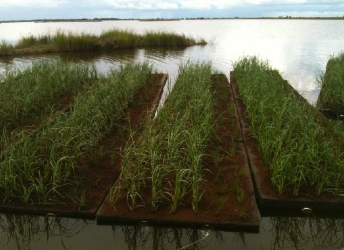
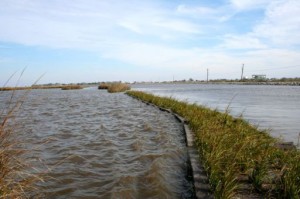
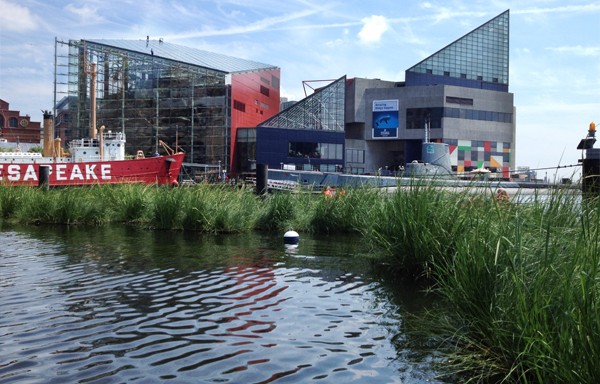 Images: BioHaven & Biohabitats
Images: BioHaven & Biohabitats
Carbon Trading Could Help Fund Restoration Work in the Gulf of Mexico
To save Louisiana from being devoured by the Gulf of Mexico, a monumental effort to restore coastal wetlands is underway. Expected to cost $50 billion, one company has come up with a carbon trading finance system to help fund the process. Tierra Resources has developed a methodology accepted by the American Carbon Registry to calculate the amount of carbon sequestered by a new project. While no credits have been sold yet, new EPA regulations on power plant carbon emissions may drive demand for this market. The company estimates that credits will sell for $7 to $8 dollars each and add about$5 to $15 billion to restoration revenue.
|
Beach Nourishment
Restoration is also a thriving enterprise along popular oceanfront beaches. Valued for recreation and storm defense, coastal residents are perhaps a little too familiar with replenishment projects. In the Netherlands a unique experiment is underway. The Zandmotor is a nourishment strategy that involves the strategic placement of a massive amount of sand so that it can be carried by natural processes and deposited along beaches over a long period of time. Instead of disturbing the environment and conducting nourishment projects every few years, a giant sand stock pile that is also being used as recreation space will naturally drift and supply sand where its needed over the course of 20 years. In addition to being far less disruptive to the environment and public, it is also far less costly than frequent replenishments.
|
Living Docks, Seawalls & More
Designing the Built Environment with Nature in Mind
In heavily developed urban environments, reestablishing natural habitat is often constrained by space limitations and other uses such as navigation. New waterfront construction can be designed and existing structures modified to create space for nature. While this type of development is still in its infancy, with resiliency projects in planning around the globe, designing infrastructure with nature in mind is without question a growing field.
|
Pictured at right is an oyster reef incorporated into a dock in West Palm Beach. Designed by Michael Singer Studio, the waterfront public space also includes mangroves and sea grass plantings within the structure.
In a study conducted in Australia, researchers found that concrete pots added to a seawall, resulted in over a 100% increase in biodiversity. Prolific sea life is also evident at at the Vancouver Convention Centre. When the existing structure was expanded, so was marine habitat. 76 concrete step style frames, some with pools were installed around the waterside base by Surespan Structures Ltd. Dubbed a habitat skirt, the 73,000 sq. ft. systems supports sea urchins, starfish, barnacles, mussels, kelp and sea lettuce on the tidal steps.
Creating New Habitat
A new seawall under construction along the central Seattle waterfront will soon function to provide marine habitat. The wall constructed of textured concrete panels contains complex surfaces and ledges that will attract and support diverse organisms. Preceding the development of the new seawall, a four year study conducted by University of Washington ecologists involved the placement of experimental model panels on the existing dilapidated sea wall. According to one of the leading researchers, Jeff Cordell, creating surface complexity added to the diversity and abundance of taxa found along the seawall. The initiative aimed at providing salmon habitat will be monitored for ten years after completion. Take a virtual tour of the Seattle Seawall project.
|
In NYC several resiliency initiatives recently received funding. A winner of the Rebuild by Design Competition, "Living Breakwaters" was awarded $60 million for a proposal which embraces both oyster habitat and living shorelines along with engineered structures to mitigate storm damage along the Staten Island shoreline.
Resiliency plans are emerging in the Tidewater region. The Virginia Beach Comprehensive Plan addresses sea level rise and includes hazard mitigation measures while Norfolk has issued a detailed resiliency strategy. As highlighted above, a number of restoration projects have been completed while more are being pursued. Noteworthy among them is a major endeavor in the Lynnhaven River. Close to $23 million in federal funds have been approved to coordinate and implement a plan that will reestablish and add oyster reefs, wetlands, seagrasses and scallop beds. Project planning coordinated by the Army Corps of Engineers is now underway. Restoration and management plans were also just released for Pleasure House Point, a 100+ tract of undeveloped land on the Lynnhaven River that was recently preserved.
More Information
Updated news about conservation of natural resources can be found in several Pinterest collections: Natural Resources, Restoration, Earth-Climate, Flood Proofing, Oysters and Eco Engineering. For news strictly pertaining to the region, see the Tidewater Regional News collection.
Check the Archive for Previous Posts
All Rights Reserved. Disclaimer.
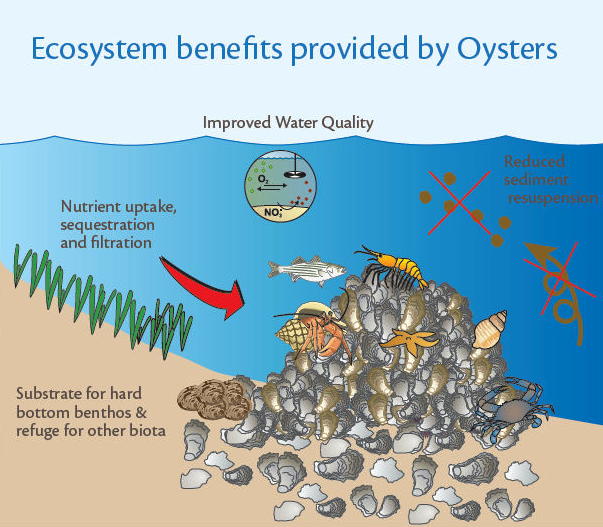
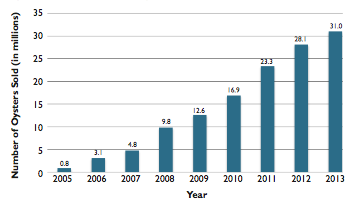
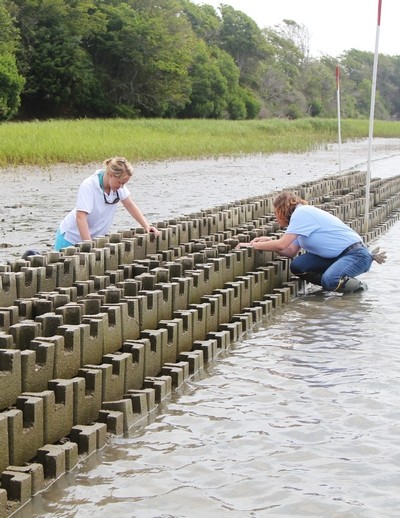
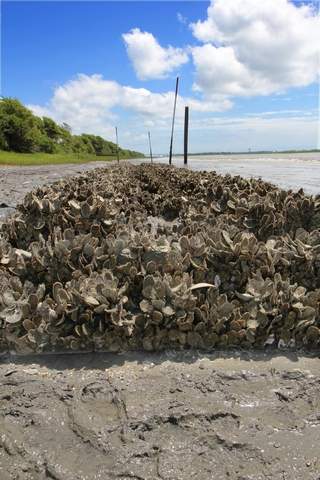 2012 USACOE Charleston Reef Castle Project - Images: Sara Corbett USACOE
2012 USACOE Charleston Reef Castle Project - Images: Sara Corbett USACOE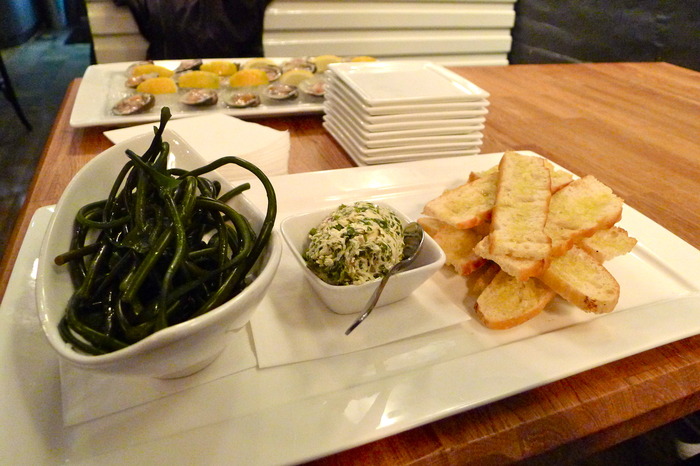 Pickled Kelp, Crostini w/ Kelp Butter and Thimble Island Clams - Image:
Pickled Kelp, Crostini w/ Kelp Butter and Thimble Island Clams - Image: 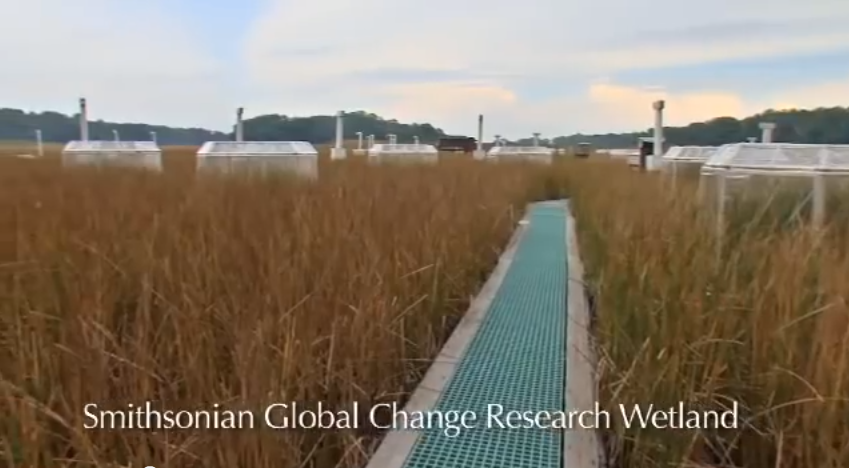
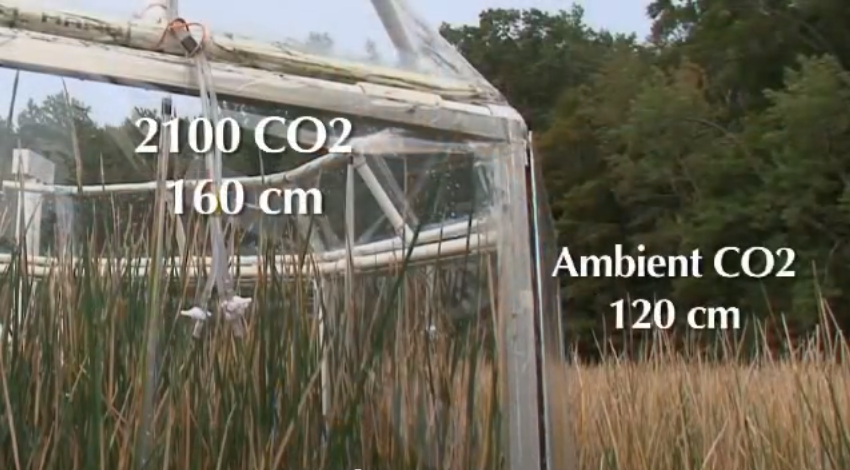 Greenhouses flooded with elevated C02 simulate future growth conditions at the Smithsonian Global Change Research Wetland in Maryland. Grasses exposed to more C02 grow faster. Images: from
Greenhouses flooded with elevated C02 simulate future growth conditions at the Smithsonian Global Change Research Wetland in Maryland. Grasses exposed to more C02 grow faster. Images: from 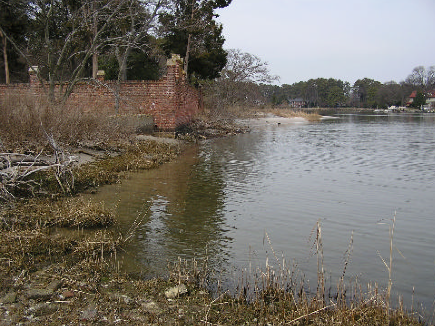
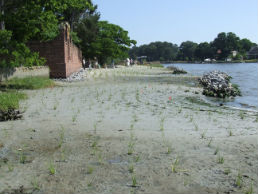
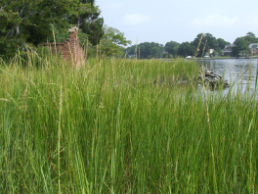 Living Shoreline at the Hermitage Foundation - Images:
Living Shoreline at the Hermitage Foundation - Images: 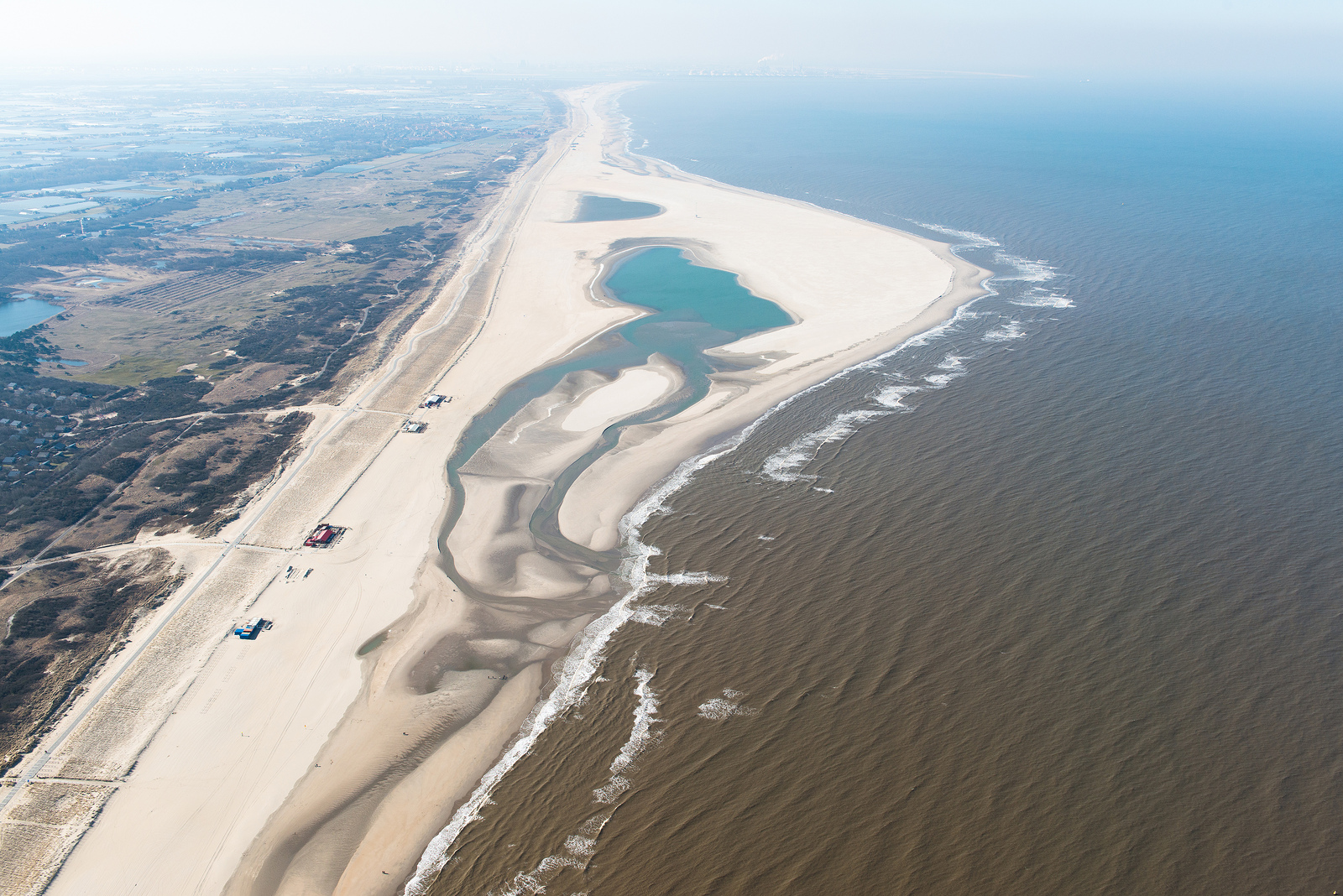
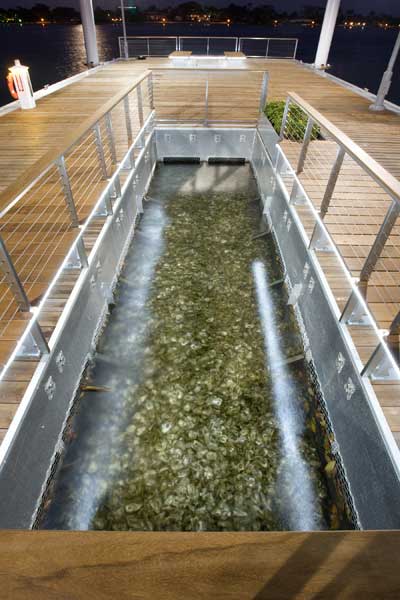 West Palm Beach Living Dock - Image Courtesy of
West Palm Beach Living Dock - Image Courtesy of 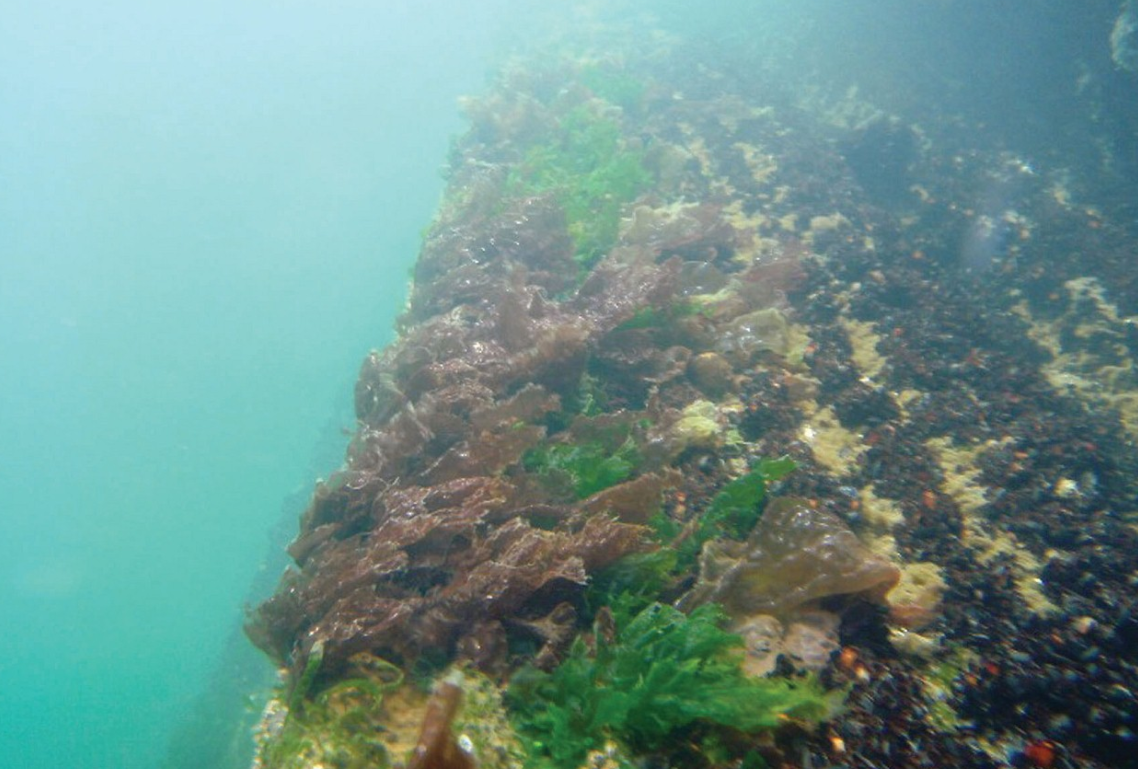 Vancouver Convention Centre Habitat Skirt - Image:
Vancouver Convention Centre Habitat Skirt - Image: 